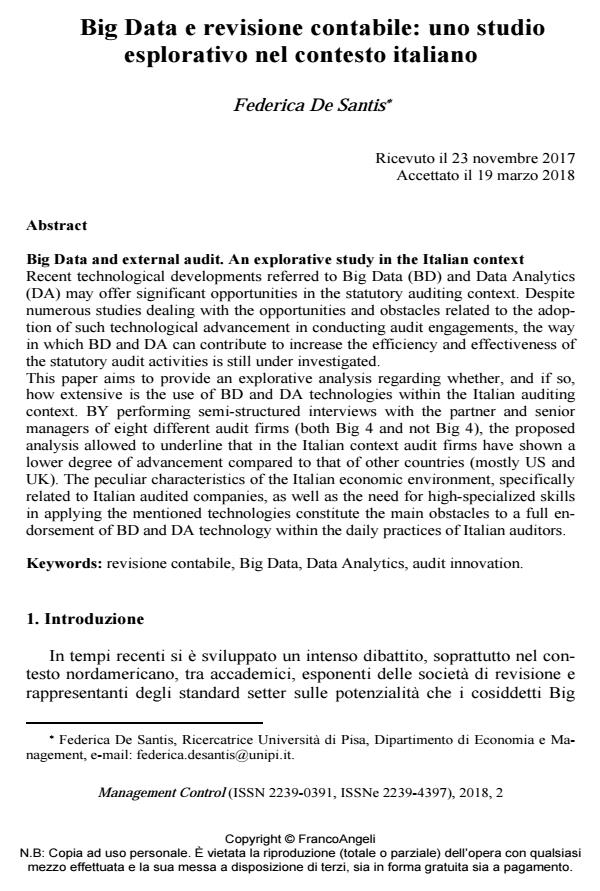Big Data and external audit. An explorative study in the Italian context
Journal title MANAGEMENT CONTROL
Author/s Federica De Santis
Publishing Year 2018 Issue 2018/2
Language Italian Pages 26 P. 129-154 File size 261 KB
DOI 10.3280/MACO2018-002007
DOI is like a bar code for intellectual property: to have more infomation
click here
Below, you can see the article first page
If you want to buy this article in PDF format, you can do it, following the instructions to buy download credits

FrancoAngeli is member of Publishers International Linking Association, Inc (PILA), a not-for-profit association which run the CrossRef service enabling links to and from online scholarly content.
Recent technological developments referred to Big Data (BD) and Data Analytics (DA) may offer significant opportunities in the statutory auditing context. Despite numerous studies dealing with the opportunities and obstacles related to the adoption of such technological advancement in conducting audit engagements, the way in which BD and DA can contribute to increase the efficiency and effectiveness of the statutory audit activities is still under investigated. This paper aims to provide an explorative analysis regarding whether, and if so, how extensive is the use of BD and DA technologies within the Italian auditing context. BY performing semi-structured interviews with the partner and senior managers of eight different audit firms (both Big 4 and not Big 4), the proposed analysis allowed to underline that in the Italian context audit firms have shown a lower degree of advancement compared to that of other countries (mostly US and UK). The peculiar characteristics of the Italian economic environment, specifically related to Italian audited companies, as well as the need for high-specialized skills in applying the mentioned technologies constitute the main obstacles to a full endorsement of BD and DA technology within the daily practices of Italian auditors.
Keywords: Revisione contabile, Big Data, Data Analytics, audit innovation.
Federica De Santis, Big Data e revisione contabile: uno studio esplorativo nel contesto italiano in "MANAGEMENT CONTROL" 2/2018, pp 129-154, DOI: 10.3280/MACO2018-002007